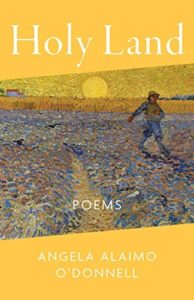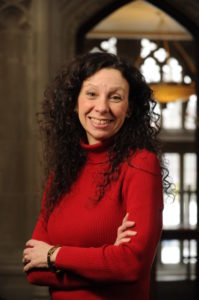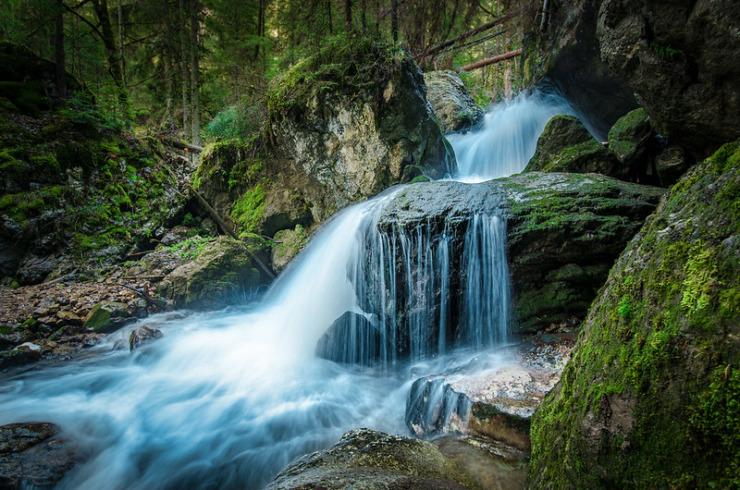For poet Angela Alaimo O’Donnell, “Holy Land” has many definitions
Most of us associate the term “Holy Land” as the area encompassing Israel, Gaza, and parts of Jordan, Syria, Lebanon, and the Sinai Peninsula. It has a fairly fixed religious connotation, encompassing three of the world’s major faiths — Christianity, Judaism, and Islam. Poet Angela Alaimo O’Donnell has that connotation in mind as well, at least for the first 16 poems of her new collection Holy Land, inspired by an actual visit to the region.
But for O’Donnell, “Holy Land” encompasses other regions, not only those that are geographic but also those of the imagination. The lands your ancestors came from, like Ireland, is one such holy land. Another is the land, or lands, where you spent your childhood; for O’Donnell, that includes Baltimore.
She includes literary lands, too, encompassing the writings of Herman Melville, Flannery O’Connor, and Rainer Maria Rilke, among others. There are lands of emotions and experiences. And there are the borderlands, those territories lying between all the other lands, sometimes resembling one and sometimes an adjacent one, but important enough to have their own classifications.
You read these poems, and you ask yourself, how can there be so many holy lands? It’s not an easy question to answer, until you realize that you’re looking from the wrong end of the question. Imagined and even physical lands are holy in the sense that a human life is sacred. Human life and human lives attach that significance to the lands.
And then you understand how a coal mining town in Pennsylvania can constitute a “holy land.”
Immigrant Song
Pittston, Pennsylvania

on your sleeve again, your mining men
and breaker boys’ faces smudged with coal,
lunch buckets open, sandwiches sooty
with the prints of their blackened hands,
telling the story of their sorry
days, years spent in darkness while the sun
tried to shine through thick clouds that part
only rarely, so unlike bright Sicily,
its sapphire seas and fields of gold,
Etna’s rich volcanic sands,
fishing boats skirting the vivid land
rife with life and color, all you lack,
how much they would give and give to go back.

Angela Alaimo O’Donnell
O’Donnell’s nine other collections of poetry include Andalusian Hours, Still Pilgrim, Saint Sinatra & Other Poems, Moving House, Waking My Mother, Lovers’ Almanac, Waiting for Ecstasy, and Mine. Her poems have been published in numerous literary journals and magazines. She’s a professor at Fordham University in New York City, where she teaches English, creative writing, and American Catholic Studies. She was graduated from Penn State University and received her master’s and Ph.D. degrees in English Language & Literature from the University of North Carolina at Chapel Hill.
You read her Holy Land, and you consider your own, the land where you were born and grew up, the land where you went to school, and the land where you built a career or work life, and the land where you raised your family. You consider the land your ancestors came from. And you understand that all of these lands occupy a sacred place in your mind and your heart.
Related:
Poets and Poems: Angela Alaimo O’Donnell and “Still Pilgrim”
Poets and Poems: Angela Alaimo O’Donnell and “Andalusian Hours”
Poets and Poems: Angela Alaimo O’Donnell and “Love in the Time of Coronavirus”
Photo by kirandulo, Creative Commons, via Flickr. Post by Glynn Young.
How to Read a Poem uses images like the mouse, the hive, the switch (from the Billy Collins poem)—to guide readers into new ways of understanding poems. Anthology included.
“I require all our incoming poetry students—in the MFA I direct—to buy and read this book.”
—Jeanetta Calhoun Mish
- Poets and Poems: Sandra Marchetti and “Diorama” - April 24, 2025
- Poets and Poems: Christina Cook and “Roaming the Labyrinth” - April 22, 2025
- Longfellow’s “Paul Revere’s Ride”: Creating a National Legend - April 17, 2025


Sandra Heska King says
I grabbed this one because the title… Holy Land… and we had just been there. But there’s so much more.
And the Texas hill country – the Frio – also a holy land.
Mary H. Sayler says
All encompassing! Thank, Glynn, for posting this perspective, poets, and poem.